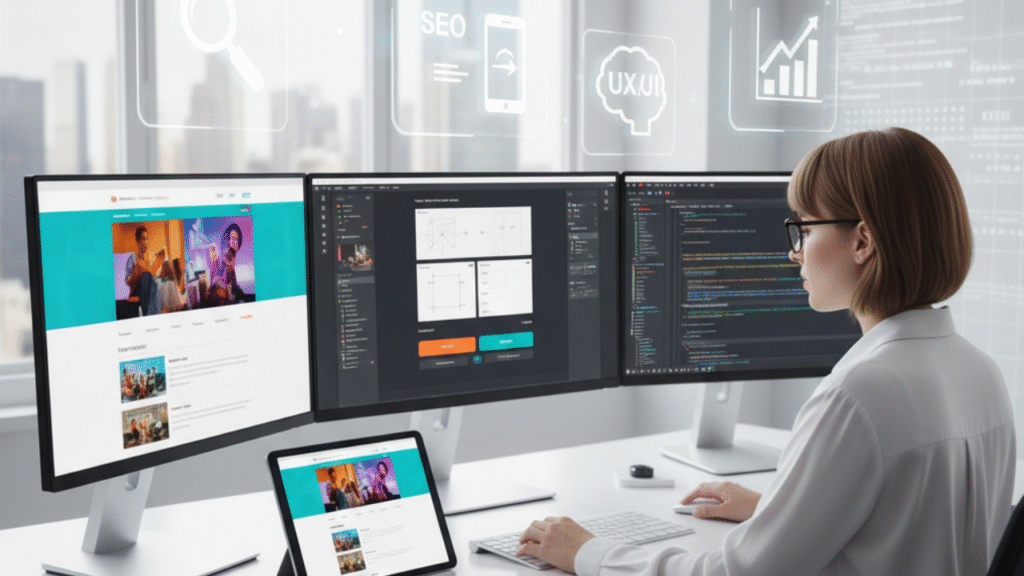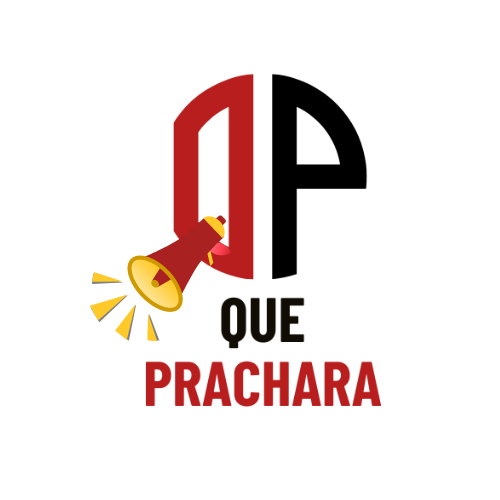Website Designing for Business Owners – Complete Guide
A website is no longer just a digital presence; it’s the backbone of a modern business strategy. For business owners, website designing plays a crucial role in shaping brand identity, building trust, and driving customer engagement.
In an era where 75% of users judge a company’s credibility based on its website design, investing in good design isn’t optional—it’s essential. Whether you run a local store or a global enterprise, your website is your 24/7 digital storefront.
This article will walk you through everything business owners need to know about website designing—from types and key principles to benefits and future trends.

What is Website Designing?
Website designing is the process of planning, conceptualizing, and arranging content online. It focuses on aesthetics (color, typography, imagery) and functionality (navigation, responsiveness, load speed).
Unlike website development, which deals with the technical backend (coding, servers, databases), website designing focuses on the user-facing interface—the part customers interact with.
Good website designing blends creativity with strategy to achieve three goals:
Attract users with a visually appealing interface.
Engage them with smooth navigation and content.
Convert them into customers through CTAs and funnels.
Why Website Designing Matters for Business Owners
For business owners, the website is the most powerful marketing tool. Here’s why it matters:
First Impressions Count: Visitors decide in 3–5 seconds whether to stay.
Builds Trust: Professional design signals credibility.
Generates Leads: Well-placed CTAs convert traffic into inquiries or sales.
Improves SEO: Search engines favor user-friendly websites.
Supports Business Growth: Websites scale with new services, products, and campaigns.
Without an effective website design, even the best marketing strategy may fail to deliver results.
Types of Website Designing
Static Website Designing
Fixed HTML-based websites.
Affordable, fast, secure.
Best for businesses with minimal content updates.
Dynamic Website Designing
Built on CMS platforms like WordPress.
Content can be updated without coding.
Ideal for blogs, startups, and service-based businesses.
Ecommerce Website Designing
Includes shopping carts, product catalogs, payment gateways.
Best for businesses selling products/services online.
Must include secure checkout and UX-optimized product pages.
Portfolio & Service Websites
Showcase previous work, client testimonials, and services.
Suitable for agencies, freelancers, consultants.
Helps establish personal and brand authority.
Key Principles of Website Designing
SEO-Friendly Design
SEO and design go hand in hand. Pages should include keyword-rich headings, optimized meta tags, ALT-tagged images, and schema markup for visibility.
User Experience (UX)
A design that confuses or frustrates users increases bounce rates. UX principles include simple navigation, minimal clutter, and intuitive page flow.
Mobile-First Approach
More than 60% of traffic is mobile. A responsive, mobile-friendly design ensures accessibility across devices.
Loading Speed Optimization
53% of users leave if a site takes longer than 3 seconds to load. Optimized code, compressed images, and caching improve performance.
Security & Trust Factors
SSL certificates, privacy policies, and secure forms reassure users. Trust seals and testimonials further enhance credibility.
DIY vs Professional Website Designing
DIY Platforms (Wix, Squarespace, WordPress templates):
✔ Low cost, easy setup, good for beginners.
✘ Limited customization, poor scalability, weak SEO.
Professional Website Designing (Agencies/Freelancers):
✔ Custom branding, SEO integration, scalability, support.
✘ Higher upfront investment.
For serious business growth, professional website designing is recommended.
Benefits of Professional Website Designing
Brand Consistency – Aligns design with brand identity.
SEO Optimization – Improves ranking and visibility.
Lead Generation – Strategic CTAs encourage conversions.
Scalability – Easy to expand with new features.
Customer Engagement – Interactive design keeps users engaged.
Analytics Ready – Track performance with Google Analytics.
Common Mistakes in Website Designing
Cluttered Layouts – Too much information confuses users.
Ignoring Mobile Users – Leads to poor user experience.
Weak CTAs – Users don’t know what to do next.
Slow Sites – Users abandon sluggish websites.
Overuse of Stock Images – Reduces authenticity.
How Website Designing Helps Small Businesses
Local SEO Advantage – Appear in “near me” searches.
Affordable Marketing – A website is cheaper long-term than ads.
Trust Builder – Professional design convinces skeptical buyers.
Sales Channel – Ecommerce or booking features boost revenue.
Competitive Edge – A polished website beats outdated competitors.
Example: A small yoga studio with an online booking website attracts more students than one relying only on phone calls.
Future Trends in Website Designing
AI-Driven Personalization – Tailored experiences for each visitor.
Voice Search Optimization – Preparing sites for Alexa, Siri, Google Assistant queries.
Minimalist UI – Clean layouts with strong visuals.
Video Integration – Explainer videos on landing pages.
PWAs (Progressive Web Apps) – Website + app hybrid experiences.
A well-designed website is a business’s most powerful asset in the digital age. For business owners, investing in website designing means creating a platform that attracts, engages, and converts visitors into loyal customers.
Whether you choose a DIY platform for starters or hire a professional agency, remember: your website is your digital headquarters. Build it strategically, optimize it regularly, and it will consistently drive credibility, leads, and sales.
Partnering with an experienced website designing and digital marketing agency like Que Prachara ensures your site is not just beautiful—but also built for growth.
FAQs
1. What is website designing?
Website designing is the process of planning and creating the visual and interactive aspects of a website. It focuses on aesthetics, usability, and user experience to attract and retain visitors.
2. Why do business owners need website designing?
Lorem ipsum dolor sit amet, consectetur adipiscing elit. Ut elit tellus, luctus nec ullamcorper mattis, pulvinar dapibus leo.
3. How much does website designing cost?
Costs vary from $500 for basic designs to $10,000+ for advanced ecommerce or custom sites. Factors include features, complexity, and scalability.
4. Should I design my website myself or hire professionals?
DIY is cheaper but limited in SEO and customization. Professional agencies ensure long-term scalability, branding, and technical optimization.
5. What makes a good website design?
Fast loading speed, SEO optimization, mobile responsiveness, intuitive navigation, and clear CTAs.

